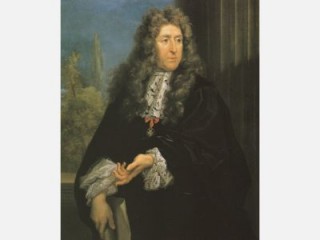
Andre Le Notre (En.) biography
Date of birth : 1613-03-12
Date of death : 1700-09-15
Birthplace : Paris, France
Nationality : French
Category : Arhitecture and Engineering
Last modified : 2010-11-29
Credited as : Landscape architect, Fouquet's chateau of Vaux-le-Vicomte , designed gardens of the Grand Trianon and Clagny
The French landscape architect André Le Nôtre, or Le Nostre, gave to the art of the formal garden its most monumental and definitive expression. His style spread to every corner of Europe.
Born in Paris on March 12, 1613, André Le Nôtre was early trained in the practical aspects of gardening procedure, being both the son and grandson of gardeners who had worked at the palace of the Tuileries. The possibility of raising this craft to a noble art form was greatly enhanced by his study of painting under Simon Vouet and by his knowledge of architecture, very possibly learned from François Mansart. In addition to this sound academic training, La Notre's style was formed by careful study of the writings on perspective and optics by Salomon de Caus and Père Nicéron.
Though Le Notre succeeded to the position of his father as chief gardener at the Tuileries in 1637, it was not until he began his work on Nicolas Fouquet's chateau of Vaux-le-Vicomte in 1655 that the landscape architect became famous. Here, in collaboration with the architect Louis Le Vau, Le Notre had for the first time the opportunity to create an entire chateau and garden complex which ultimately resulted in an unparalleled visual harmony of the whole. Throughout the gardens, which were designed as a logical architectural extension of the structure they served, there is a spirit of ordered discipline, geometric formality, and perfect equilibrium among the various components— fountains, sculptures, parterres, and architectural elements.
Upon the completion of Vaux in 1661, Le Notre was active in the service of King Louis XIV, redesigning the gardens of Fontainebleau, Saint-Germain-en-Laye, and the Tuileries. Le Notre's masterpiece was the vast garden project for Versailles, which he began in 1662 and which engaged his talents throughout the remainder of the century. For Louis XIV he also executed the gardens of the Grand Trianon and Clagny, and for the French nobility he designed the splendid garden complexes of Sceaux, Chantilly, Meudon, Saint-Cloud, and Pontchartrain. Among the lesser gardens to which his name assuredly can be attached are those of Maintenon, Saint-Cyr, the Palais Royal, and Gaillon.
In referring to Le Notre's death on Sept. 15, 1700, the Mercure de France wrote, "The king has just lost a man rare and zealous for his service, a man who, very singular in his art, did him great honor."
Major studies in English of Le Notre are Helen Fox, André Le Nôtre: Garden Architect to Kings (1962), and F. Hamilton
Hazlehurst, Gardens of Illusion: The Genius of André Le Nôtre (1972), in which the life and works of the landscape architect are examined in detail.
André Le Nôtre: (1613-1700): critical study, Lewes, Sussex: Book Guild, 1986.
Hazlehurst, F. Hamilton (Franklin Hamilton), 1925-, Gardens of illusion: the genius of André Le Nôtre, Nashville, Tenn.: Vanderbilt University Press, 1980.
















